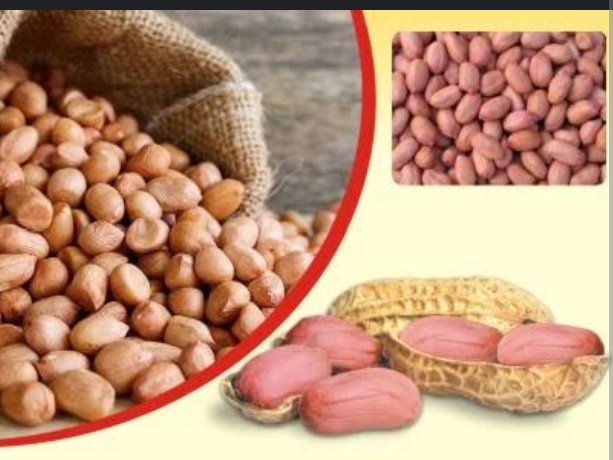How to Eradicate Striga in Your Maize Field: Unveiling Strategies
How to Eradicate Striga in Your Maize Field:
Unveiling
Strategies; 🌽
Maize fields globally face a persistent threat from Striga, a parasitic weed that can significantly reduce yields if left unmanaged.
In this comprehensive guide, we'll explore effective strategies to eradicate Striga and safeguard the productivity of your maize field. Striga, also known as witchweed, attaches itself to the roots of maize plants, siphoning off nutrients and stunting growth. Addressing this weed requires a multi-faceted approach, combining preventive and control measures.
1.Crop Rotation:
Rotate maize with
non-host crops to break the Striga life cycle. Legumes, for instance, can be
excellent rotation options. This disrupts the weed's ability to thrive between
maize seasons.
·
Example: After a maize harvest, consider
planting soybeans or cowpeas to break the cycle of Striga infestation.
2. Resistant Maize Varieties:
Opt for maize varieties
that exhibit resistance to Striga. Breeding programs have developed strains
that can withstand Striga infestation to a significant extent.
·
Example: Explore local seed varieties or
consult with agricultural experts to identify Striga-resistant maize varieties
suitable for your region.
3.Interplanting with
Striga-Suppressant Crops:
Interplant maize with
crops that naturally suppress Striga growth. Sorghum, cowpea, and millet are
known to have allelopathic effects on Striga.
·
Example: Create mixed cropping patterns
where maize is interspersed with sorghum or cowpea to inhibit Striga
germination.
4. Staggered Planting:
Avoid planting all maize
fields simultaneously. Staggering planting dates disrupts the synchronized
emergence of Striga, making it harder for the weed to establish itself.
Example: Plan your
planting schedule to spread across several weeks rather than planting all your
maize at once.
5. Fertilization
Management:
Apply balanced
fertilizers, especially nitrogen, to enhance maize growth. Well-nourished and
healthy maize plants are more resilient to Striga infestations.
Example: Regularly assess
soil fertility and apply fertilizers accordingly, focusing on the nutrients
that promote maize vigor.
Explore the use of
biocontrol agents, such as mycoherbicides (fungi) that specifically target
Striga seeds. These agents can contribute to reducing the Striga seed bank in
the soil.
Example: Consult with
agricultural experts to identify and implement suitable biocontrol measures for
your maize field.
7. Striga-Trap Crops:
Utilize
trap crops like desmodium or sunflower to attract Striga seeds, preventing them from infesting your maize. These trap crops act as a sacrificial barrier.
·
Example: Planting a border of desmodium
around your maize field can serve as an effective Striga trap.
8. Deep Tillage:
Incorporate deep tillage
practices before planting to bury Striga seeds too deeply for germination. This
helps reduce the number of viable seeds in the topsoil.
·
Example: Implement deep tillage,
especially in Striga-prone areas, to disrupt the weed's ability to establish.
9. Herbicide Application:
Consider using herbicides
specifically formulated to control Striga. Pre-emergence or post-emergence
herbicides can be effective in managing Striga infestations.
·
Example: Consult with agricultural
extension services for recommendations on herbicides suitable for your maize
field.
10. Hand Weeding:
Regularly hand-weed
Striga-infested areas, especially during the early stages of maize growth. Be
cautious not to disturb maize roots while weeding.
·
Example: Train farmworkers to identify and
manually remove Striga plants during routine field inspection
11. Continuous Monitoring:
Regularly monitor your
maize fields for signs of Striga infestation. Early detection allows for prompt
intervention, preventing the weed from establishing a stronghold.
·
Example: Establish a routine inspection
schedule to closely monitor the health and growth of your maize plants.
12. Community Education:
Collaborate with
neighboring farmers to raise awareness about Striga control measures.
Coordinated efforts across multiple farms can be more effective in managing the
spread of Striga.
·
Example: Organize community workshops or
training sessions to share knowledge and strategies for Striga eradication.
Eradicating Striga from
your maize field requires dedication, careful planning, and a combination of
strategies. By integrating these approaches into your farming practices, you
can create a resilient maize field that thrives free from the constraints of
Striga infestations.
Happy farming!
#StrigaEradication #MaizeFarming
#AgriculturalGuide




Comments
Post a Comment